Early 1900s Music & the Dawn of the Modern World
An inaugural 'stack by an iFunny emigre. This article concerns music from the very early 1900s and what it about it is relevant to people in the 21st century.
Greetings ‘stackers. It’s been a few days since my introductory post, and I’m back with my first real article: early 1900s music. I’m generally speaking here about music published and performed from 1900 to 1918. Music that was mostly performed by people who looked and sounded like this:
This may not be a topic that will captivate the iSubstack community in its entirety, but it’s of great interest to me and may contain some interesting nuggets of information for the autistic gifted kid chudjak crowd.
I have no idea what 90% of the stuff in the above image is, but I definitely “heart” some weird and obscure things, for better or for worse. Of all the extremely niche categories of media to garner an interest in, early 1900s gramophone music is certainly up there. Yet there is a novelty and wholesomeness to it that makes it appealing, if you can overcome the technical and artistic hurdles necessary to appreciate it.
Categorizing this period of music
I give that specific time range for a reason. Some of this category probably applies to the 1890s, but so few surviving records from that time exist and are digitally archived, and it’s mostly just banjo or piano music, rather than music that was purpose-written and performed for the sake of listening on a gramophone. Why do I stop at 1918? Because effectively as soon as the First World War ends, popular music takes a drastic stylistic and tonal change that separates it from what came before. More on that later.
I have long had an interest in music from the turn of the 20th Century. I have never heard all this music described as a single bloc before, so I do not know the correct terminology to describe it. I have variable used the terms Early 1900s Music, Turn of the Century Music, Tin Pan Alley Music (in reference to a street in New York where much of it was recorded), and Vaudeville Music. Tin Pan Alley is not entirely accurate, as the phrase refers more to the industry that produced the music than the music itself. And vaudeville isn’t the best descriptor either, as not all of it made its way to vaudeville, and not all vaudeville music was recorded. But the comic novelty songs that were popular in the early 1900s were probably most famous for their vaudeville performances, such as those parodied by Seth McFarlane in Family Guy.
Additional clarification: I am speaking about American and some British music in this article. Whatever trends there might have been in other countries, I have no awareness of them. These songs are all in English and are sung by American, English, Scottish, and especially Irish (and later, Jewish) actors, meant for British and Anglo-American audiences.
As the oldest recorded music that people can still go back and listen to, it has a fascinating quality. By listening to this music, you are communicating with people who lived and died a century ago. There is more to this music than the plain novelty of listening to a one hundred and twenty year old voice, however. There are other interesting aspects of these songs which reflect both the technological advances available to early 20th Century Americans and the cultural setting in which they lived.
Technological background
First and foremost, I should explain how this music was recorded. Electric microphones were not yet invented, so sound was recorded acoustically. How this worked was you had a giant horn placed on the wall which would catch all the sound and funnel it into a thin diaphragm. This diaphragm would vibrate with the frequency of the music and pass that information on to an attached stylus. The stylus then etches the sound waves onto a wax cylinder or disc (vinyl discs were invented in later decades). The gramophone just reverses that whole process by catching the rotating cylinder with its needle and sending the sound back out the horn so you can listen to it.
This had practical effects on how music could be performed. The band would play in front of the horn while the singers stood to the side. When it was time to sing, the singers would have to lean in and sing directly into the horn, which can somewhat block out the instruments behind them. The electric microphone, which was not commercially available until the mid-1920s, allows for far greater musical intricacies and subtleties that the horn can’t catch. Yet the limitations of the horn make this acoustically-recorded music unique and worth listening to for those very qualities.
Just as an opera singer has to project his voice in a certain way to reach the entire amphitheater, the Tin Pan Alley singers had to project their voice into the horns. The result can be jarring, as it often sounds like they’re practically yelling. This sounds like a net downside, and maybe it is, but it has a boldness and directness that modern music lacks. I love opera and especially comic opera (before the 1980s revivals largely ruined it), so this vocal quality greatly appeals to me. Take, for example, the American version of WWI patriotic song “We’ll Never Let the Old Flag Fall,” with a very strong performance by this English quartet.
A little detail I like in a lot of old records from this time, which you don’t see in music today, is that the record company has an announcer who tells you the name of the song and performers at the start. You get used to it after hearing a lot of songs, and it becomes quite enjoyable to hear that familiar announcer’s voice ring, “School Days, sung by Byron G. Harlon, Edison Record!” or “Smarty, sung by Ms. Ada Jones, Edison Record!” before the first bars play. Here’s a very quaint old advertisement for the Edison Phonograph, played back on cylinder, which proudly proclaims all the capabilities of the wondrous new machine. By the way, if you’re wondering what the difference between a gramophone and a photograph is, there is none. Phonograph was just the trademarked name of the Edison company’s gramophones, and it’s since been genericized into a synonym for all gramophones. It’s like Band-Aid vs. adhesive bandages.
Sub-genres
I’ve found that there are four main categories of music from this period: Love songs, novelty songs, ballroom music, and patriotic music from the First World War.
The love songs are quite straightforward. They’re sappy, sentimental, and saccharine, or they’re pining and melancholy. Such songs preceded the invention of the gramophone, though they were definitely commercialized as an industry once the technology appeared. A classic example is "By the Light of the Silvery Moon,” an extremely popular song for the day that was often referenced and parodied by other singers.
Next we have my favorite: comic songs, which are also known as novelty songs. These are the kinds that get the most criticism for being “problematic” nowadays—which I will discuss at greater length later on in the article. Essentially, a comic song is simply a song that revolves around a theme. It could be a humorous or unique situation, or a far-off exotic country, a fad dance, a new technology, or some other gimmick. For example, we have “Oh By Jingo,” a song set in a fictional Caribbean country where their language is based around turn-of-the-century euphemistic exclamations, like “Oh Gee” or “By Golly.” Or “I’m Henry VIII, I Am,” in which the titular character is newly married to a widow. He, like her previous seven husbands, is named Henry; he takes to his new role as Henry VIII and puts on royal airs in public, with humorous results. This song is mostly only remembered for its Beatles cover, and many have no idea that there was an older song at all.
Though they aren’t love songs, they often revolve around romance and marriage, reflecting the quirks of Progressive Era/Edwardian mores. People were loosening up from the strict, tightly-controlled Victorian Era, yet they still were a long way away from the Roaring Twenties. I sound like a broken record at this point, but still—more on that later!
The third category is probably the least interesting and was not super popular at the time: ballroom music. This is music that is either entirely instrumental or has only a single vocal chorus and is meant to be played in ballrooms or at parties for people to dance to. This was only starting to take off in the 1910s, but I think people still preferred live performances back then. The ball really got rolling in the 1920s and especially the 30s, and it’s rare to find any recordings from those decades that have more than a single verse and chorus. That’s okay for the 30s, when microphones were getting better, but if you’re listening to technologically primitive 1910s music, you want to hear the weird and quirky stuff that makes it worth listening to.
The exception is ragtime, which I’m not really going to talk about a lot in this article. That’s a whole different topic. But it’s very nineteen-oughts, despite the fact that it’s usually characterized as wild west cowboy music or 1920s gangster gambling hall music. Scott Joplin, the main ragtime composer, actually intended for it to be genteel, upper-middle class music that was played slowly and respectfully, though most did not agree with his vision and ragtime is usually played deliriously fast. He had a lot of ideas and ambitions that didn’t get realized, as well. He wanted to introduce African-Americans to the high culture scene with Treemonisha, a three-act opera by and for black people that took influences from European grand opera. The black community as a whole, however, didn’t share Joplin’s vision of high black culture and his career ended in disappointment.
The point is, ragtime, especially Vess L. Ossman’s banjo performances, are worth listening to, but other instrumental music from this period is pretty lackluster. Seriously, look up Ossman; it’s great, period-accurate music to listen to when you’re playing Red Dead Redemption 2. I also love the juxtaposition of this classy, suit-and-tie gentleman with crazy, energetic banjo music.
Lastly, I’ll mention the patriotic music. Some of it precedes the United States’ entry into World War I, but the vast majority of it was produced during the war. It’s insane how popular it became when the United States joined. The American Quartet’s performance of “Over There” was #1 on the charts for nine consecutive weeks, which is unheard of nowadays. It was only beaten by Nora Bayes’ performance of Over There, which stayed at #1 for two weeks until it was dislodged by Enrico Caruso’s version (three weeks), and finally the Peerless Quartet’s performance—which remained at the top for another three weeks! That’s nearly a year and a half, basically the entire duration of the United States’ involvement in the war.
That’s one thing I haven’t mentioned yet, but it’s important. Songs weren’t exclusively linked to a particular singer or band back then, and you’d see tons of competing covers of the same song by different singers, produced by different record labels. That’s very strange to us today, in a world of competitive and cutthroat copyright enforcement. But back then, if you liked the Billy Murray cover of a certain song, you might also check out the Arthur Fields cylinder to hear a slightly different spin.
There’s a lot of other music produced throughout the war, however, with varying levels of popularity. There are songs about fighting and the war itself, traditional antebellum patriotic music, sentimental songs about soldiers longing for home, and more. Two categories I find very interesting are “demographic songs” and parody/sequel songs. The former are meant to appeal to some kind of target demographic and get them on board with joining the army. There are appeals to the Union Army in the Civil War to bolster the army’s core population of Yankees (That’s a Mother’s Liberty Loan), reconciliatory songs for Southerners that hype up their warlike nature (The Dixie Volunteers), and music for the Irish (Where do we Go From Here?) and even German-Americans (Let’s All be Americans Now), who would not ordinarily support the anti-German, pro-British cause of European intervention. There were even songs trying to entice blacks to join the Army (They’ll be so Proud in Dixie of Their Old Black Joe), although they’re so saccharine and, for lack of a better term, coon-ish, that I can’t imagine blacks found them very convincing.
The latter group, sequel and parody songs, are interesting. These are references to existing popular music, re-tooled for wartime use. They might take a character from an older novelty song and write about how he’s now enlisted in the army or is doing something else to help the war effort. “When Alexander Takes His Ragtime Band to France” is a notable example, taken from the popular 1911 song “Alexander’s Ragtime Band.” I’m admittedly not a big fan of either of these songs, but they’re worth mentioning.
That was a lot of information to take in, so let’s pause for a quick break. Not a boob break, mind you—public tastes of the day wouldn’t allow for it! But I’ll share a photograph or two of Ms. Lillian Russell, a very popular singer from the day who was widely considered an ideal of beauty and charm. She wasn’t a record singer, though, and there’s only one surviving recording of her voice.
Here she is as the titular character in Gilbert & Sullivan’s comic opera Patience; or, Bunthorne’s Bride. I have a lot to say about Patience, which you’ll get to hear in my next long-form article. Now that our break is over, let’s continue with the article.
The problem with Early 1900s music
I’ve said a lot about this era of music already, but haven’t addressed the elephant in the room: nobody listens to this music anymore, and most people exposed to it would not like it. There are several reasons for this, which I will address, even though I love the music from this period.
They sound weird and old. Music tastes were different back then and were far more subtle than the powerful, energetic movements of the later 20th Century. I have already discussed at length the technological limitations of this music and how that impacted them aesthetically, but even if these songs were expertly performed by the best live concert venues, people today will generally not enjoy them. Simply put, most young listeners are going to be bored, weirded out, or even outright repulsed by these songs. Additionally, there are technological and aesthetic barriers that drive a gap between modern music tastes and the kind of music that was physically possible to record back then. If you played one of these songs to a modern white woman, it would give her “the ick.”
They sound scratchy and warbled. This is simply a matter of media preservation. These are century-old records being played on century-old machines. These records were difficult to record under the best conditions back in 1900, and it’s a miracle any of them still play at all! You’re better off listening to videos on YouTube (of which there are thousands) than seeking ancient wax cylinders to play on an antique Edison Phonograph. Unfortunately, many older uploads were taken down for copyright (which had just barely not expired in the days of early YouTube), and recent uploads have these awful AI filters that try to remove the scratches and crackle of the gramophone. That doesn’t sound like a bad idea, but in practice it means that the song comes out all muffled, sounding like you’re listening to it underwater. I’d rather hear the crackle than try to fix it digitally; the record static is part of the experience.
They are racist. Take, for example, the song “Navajo,” sung by Billy Murray in 1904. It concerns a black man who seduces an Indian squaw by giving her beads, feathers, and makeup, so that she can keep feeding him with fried chicken. That would be appalling today, but whyte folx in 1904 thought it was a rip-roaring good time. It is a funny song though. It reminds me of the Indian camp in Peter Pan. These songs were written in a time when Europeans and even Americans were trying their hand at building empires in the far reaches of the world. It was an age of high adventure, in the minds of the media-consuming public, and they wanted stories of Burmese jungles, African safaris, Indian chieftains, Persian bazaars, and Japanese tea houses. That’s putting it romantically. Put bluntly, the songs have subject matters that are at best racially insensitive by modern standards, and openly racist at worst. It’s no skin off my back—it wasn’t enough to bother me when I was a much more sensitive teenager and it doesn’t bother me now. But it’s quite evident that normies will not be able to get over this cultural hurdle. There’s a lot less blackface going on here than normies think (if they’re thinking about this music at all), but literally any amount of blackface is an irreconcilable issue for most people.
Gen Alpha kids are stupid. There is a diabolical joker at work in any discussion of pre-WWII media: Gen Alpha children. Also troons, who are the progenitors of much that is afoul with Gen Alpha children. The both of them lurk in Discord servers and YouTube comments sections, peddling their twisted notions and ideas that were fed to them by some nefarious algorithm. What I mean to say is that if you ever come across a song from the 1910s in the wild, it’s almost certainly going to be a part of some 14 year old kid’s analogue horror project. The Caretaker’s Everywhere at the End of Time popularized sampling media from the first half of the 20th Century and remixing it to be “creepy” and “eerie.” You can listen to a totally upbeat, chipper song, but the fact that it’s played back on a rustic Edison Phonograph means that it is suddenly “so fucking liminal it’s terrifying.” These are the kind of songs that get used in the custom FNAF fan videos or cursed Hearts of Iron IV TNO Taboritsky evil kill-people-ism Burgundian System superevent compilations (the same also occurs with many Orthodox Christian hymns. It is frustrating to look up a hymn and find the comments section polluted with troons and children screaming about TABORITSKY FIND ALEXEI?!?!?!). Sometimes this phenomenon occurs in a more mainstream way, such as when an old song is sampled for a horror movie and slowed and reverbed to be more spoooooky. As a long-standing enjoyer of Tin Pan Alley music, I greatly resent it being misappropriated in this way.
In spite of all these faults, I still find this music enjoyable, though I certainly don’t listen to it all the time. If you would allow for one more digression, I’d like to humor you with the tale of how I came to discover these songs. If you don’t much care, then just skip the following section and go to the next. See if I care.
My journey to Tin Pan Alley
I always had different tastes in music than most other people. As a child, I’d borrow my mother’s iPod and listen to her patriotic 4th of July playlist. My favorite song as a child was the United States Field Artillery March, which we sang as a warmup song in elementary school choir. For the very few of you who know who I am on iFunny, I originally went by the username PatrioticAmericanMusic, and my account was dedicated to posting such.
Flash forward to 2016, when Hearts of Iron IV came out. I was very excited, I had already cut my teeth on the WWII mod for Civilization V and the original Kaiserreich mod for HoI2: Darkest Hour, and naturally played this game with all the frenzied fervor of the chuddiest of ‘teens. I played it so frequently, in fact, that I grew to hate the repetitive soundtrack. I’ve heard that it’s been expanded over the years to include more songs of a more varied nature, but I wouldn’t know. I don’t play Hearts of Iron anymore; I burnt myself out so intensely back then.
But I grew so sick of the soundtrack that I looked for alternatives. I discovered a website called radiooooo.com, which looked a lot different back then than it does today, but the principle is the same. You click on a decade, click on a country, and it’ll play a random selection of music from that period. I listened to 1940s records ad nauseum and began to explore the other options. I thought it was so novel that there were records from 1900 and that you could listen to them, so I started listening more and more to that category, and soon fell in love with it.
Since then, I’ve come to enjoy certain singers and quartets more than others, and have curated for myself a selection of several hundreds of songs which are nearly a hundred years older than I am. I guess the point is, I didn’t immediately discover this genre and I didn’t immediately like it. It was an acquired taste which I’ve come to greatly enjoy, but I’ve never been so obsessed with it that it’s all I think about or listen to. And I’ve almost never discussed this topic in real life, because it would quite frankly bore most people.
But the online realm is quite different, and it is much easier to find an audience that is willing to learn about new and different things. You’re all troopers for sticking with me so far, but we’re not done yet!
What this music tells us about Early 20th Century society
This has already been a long article, but really it’s just been the warmup. This was all a primer to introduce you, the reader, to a very niche world of music so that you can be informed enough to appreciate what I am about to discuss. It’s time to explore what these songs tell us about Progressive Era/Edwardian society.
These are two eras that roughly coincide with each other on both sides of the Atlantic. The Progressive Era is the age of United States history which follows the Gilded Age, and lasted from 1898 to 1919. The Edwardian Era is more restricting, and follows the period of British history during the reign of King Edward VII, which lasted from 1901 to 1910. In a cultural sense, the Edwardian Era kind of extends into the start of King George V’s reign, up until the First World War began in 1914.
Both of these eras saw a surge in optimism and new moralism that followed the more dour periods that preceded it, especially in the case of Britain’s Victorian Era. The Victorians were more politically and socially conservative and took certain social conventions to very severe lengths. Take, for example, the Victorian English mourning tradition, in which women wore mourning clothes for the rest of their lives following the death of their husbands. Their wardrobe grew less austere by degrees over the course of many years, but given the lower life expectancies people had back then, you were going to see a lot of people wearing only black all the time!
The following era was more of a time to let loose. Both countries championed more liberal, reformist causes: the Liberal Party slid into power in England, and Roosevelt’s Republican Party defined the United States for the next twenty years. Yet, as we’ll see later, they were still very reserved and modest compared to the revolutionary age that succeeded them.
How is this expressed in their popular music? Well, we see a sort of cheekiness develop. There are a lot of songs about girls playing hard to get, or young adult lovers (teenagers, although that concept was not quite developed yet) getting into mischief that could be euphemistically implied as fornication. A lot of these songs invoked some third party springing in on a tête-à-tête between secluded lovers and spoiling their fun, like a little brother, a night watchman, or the personified moon and stars. You can have your fun, but don’t get caught, or we’ll have to put a stop to it!
Cheating and jealousy are now laid on the table as topics worth singing about, though there is almost always a catch. Take, for example, “Call Me Up Some Rainy Afternoon.” Boy meets girl (can I make it any more obvious?), girl gives the man his telephone number. There were a lot of songs about telephones back then. They arrange for another date, but when he arrives at her house, the door is locked, and he hears the girl from behind the door saying the exact same things she told him over the phone to a different man. Then, humorously, the chorus kicks in—all the other men she’s cheated are singing with him, stuck on the front stairs in the rain! She’s a cheat, but she’s clearly in the wrong for it, and there’s a kind of “bro solidarity” in everyone having been had by this minx of a woman.
Here’s my favorite example of this characteristic early 1900s cheekiness: Smarty, performed by the two biggest stars of the era, Ada Jones and Billy Murray. These people were as big back then as Taylor Swift is today, which is weird to think about. The song is about two school-aged children. The boy and girl clearly like each other, but have a hard time expressing it, in that typical childlike manner. So, to invoke her envy, he kisses a different girl in front of her, and she throws a tantrum in response. Generally, it seems that early 1900s Americans enjoyed a little bit of game-playing in their romance, but didn’t want things to be taken too far.
There are a few times when things were taken too far. I’ll give a humorous example and a more serious one. For fun, we have “The Handsome Brave Life Saver,” in which a woman at the beach repeatedly pretends to drown so that a strong, testicular lifeguard can rescue and resuscitate her. All goes well, until one day she really does get in trouble and actually needs help. The lifeguard, however, has to ignore her cries, because today his jealous wife is present and watching over him!
The most notable song, and probably one of the songs with a longer cultural lifespan than most other’s I’ve referenced so far, is “By the Beautiful Sea.” This one has a lot of covers by more recent musical groups, though I’ll still link an antiquated recording for consistency’s sake. At first listen, it sounds like a completely innocent song about two lovers having wholesome fun at the beach. There are church choirs who have sang this song without giving it a passing thought. Yet, upon reaching the second verse and listening intently, you find that the lovers are in fact married people playing hooky and cheating on their respective spouses with each other. There is no remorse, no comeuppance, it’s presented as happily as the rest of these songs.
I earlier mentioned King Edward VIII; he was quite libertine as monarchs go, with some fifty mistresses. One of them was a British Baronet’s wife, and said Baronet threatened to name Edward (then Prince of Wales) as co-respondent in his divorce suit. His sister-in-law, the Tsarina of Russia, hated him for neglecting and cheating on his wife Alexandra. He wasn’t the first or last monarch to flout the vows of marriage, but it was still a stark departure from his very faithful and devoted mother. The United States didn’t suffer quite the same problem with its national leadership, but attitudes were nonetheless changing.
I will additionally say—and make of this what you will—that this is the earliest instance in which Jews have a noticeable, direct impact on American culture. They did not invent this genre of music, and it took them a while to slide into it, but by the 1910s the industry was definitely heavily influenced by Jews. Many of the dominant songwriters and some of the most popular singers were Jewish. Irving Berlin, who wrote Alexander’s Ragtime Band, White Christmas, God Bless America, and many, many other songs, has received such sobriquets as “America’s Songwriter,” “the Great American Minstrel,” and “the greatest songwriter that has ever lived.” They were aware of this and were, in fact, proud of it. Take this song, written by the Tin Pan Alley duo songwriters, William Jerome (Irish) and Jean Schwartz (Jewish): “If It Wasn’t for the Irish and the Jews,” jokingly arguing that everything good America has is thanks to these two demographics. Generally, throughout the 1910s, you see a duo of Jewish songwriters and Irish performers. Billy Murray, whom I mentioned earlier, was Irish by birth. No wonder Seth McFarlane is always talking about Jews, Irishmen, and musical theater on Family Guy! They’re very related topics.
All of this that I discussed, however, was the calm before the storm, so to speak. Once the Great War ended and the Doughboys came marching home, things would never be the same.
Red Summer
1918 may have been the worst year in recorded human history. The amount of terrible things that happened is too long to list, and would detract from the point of this article. But I’ll mention that which is relevant to the United States.
There is, on the whole, a loss of innocence. The US was forever disturbed from its isolationist slumber and forced itself from then on into the role of interventionist superpower. We didn’t lose an entire generation like England or Germany did, but the experience did shake us to our core. The last few months of fighting, in which American troops took the lead (an article on the United States’ involvement in WWI would be a good article for some other time, methinks), were the most intense of the entire war, and America’s youth was baptized by fire. They came home to a country quite unlike the one they left, even if things seemed similar on the surface.
Abroad, there was the Bolshevik Revolution, followed by revolutions and wars across Europe and beyond. Even the United States experienced its own wave of strife and turmoil the following year, with anarchist bombings throughout the country and the infamous “Red Summer,” which was basically a low-intensity race war. Being an Oklahoman, I have heard no end of talk surrounding the Tulsa Race Riot (which has been rebranded as the Tulsa Race Massacre and will inevitably attain some ridiculous new title, like the Tulsa Race Genocide), but the riot actually occurred years after the rest of the country underwent race riots of its own. If you think about it, the white people of Tulsa tried very hard to preserve peace and avoid violence until it inevitably boiled over into the riots. Basically, 1919 was the closest America ever came to a second civil war. Domestically, all sorts of other things were changed. Women’s suffrage and prohibition were introduced to the country. Poor Johnny Doughboy, shell-shocked in Flanders, had to come home to an overpowering wife and tumultuous countryside without the warmth of strong drink to console him!
We see the change expressed in music as well. Before the United States’ entry into the War, the women in music are generally kinder, sweeter, more lovey-dovey. There are a few exceptions, but generally the worst they can be is cheeky and teasing. Still, your average song is about a sweetheart, girl-next-door type of figure. Their voices have a delicate quality (as delicate as you can sound while shouting from your chest into a recording horn, anyway) and they dress modestly and fancifully. This is not so for the women that succeeded them.
They look different, and their voices are different. In “Meet Me Tonight in Dreamland,” shown above, for instance, there is a pleasant, sing-song quality to Ms. Wheeler’s voice. That song dates to 1909. Compare Wheeler to a famous singer from the 1920s, Marion Harris. I’ll give an example with this 1918 record, “After You’re Gone.”
Harris, though a little ahead of the curve compared to the rest of the subculture, was the quintessential flapper. Her tone of voice is harsh, not sweet at all. Her song lyrics usually involve disdain for men. Men stop becoming someone to pine over and woo, and instead become prizes to dominate and control. The flapper subculture reflects this attitude in all its mannerisms. They dressed immodestly, publicly drank alcohol, smoked, and swore, drove cars (shocking, for the time), and were very sexually promiscuous. The old world ended in 1918, and now it was time to party with reckless abandon. Chivalry was dead, and the age of immodesty had begun, placing mankind on its long, lumbering march into the longhouse.
History tends to remember the “Roaring Twenties” as some great, long conga line that stretched from coast to coast, one big party that continued without interruption until the stock market crash of 1929. It was an age of high society, good times, and titillating scandals. But not everyone remembered it so fondly or wanted to participate in it. The 1940s parody band Spike Jones and his City Slickers, one of my favorite musical groups, frequently spoofed early 1900s music with outrageous, whimsical renditions of the old classics. They released albums with titles like “Dinner Music, For People Who Aren’t Very Hungry.” When asked why they didn’t parody more recent music, Spike replied that they weren’t worth parodying. The new music was practically a parody of itself already. You can’t destroy what’s already broken.
One of the most extreme interpretations of the 1918 paradigm shift comes from the land that was the most deeply scarred by its events: Russia. Among some Russian Orthodox Christians, there is a belief that the 1000 year reign of Jesus Christ as described in St. John’s Revelation refers to the age of the Church, which came to an end with the destruction of the last Christian empire and the dawn of the modern world. In 1918, they said, Satan was released from his fetters and set loose upon the world as the prince with the power of the air. If that’s true, then that means we’ve been living in the End Times ever since.
That’s a very extreme belief, and I’m not even sure if it’s true or not as an Orthodox Christian myself. It’s also a very serious and dreadful thing to mention in an article about comic songs. At any rate, the immense calamity that befell Russia did not reach the United States, though we did feel its echoing pangs. But this 1918 Apocalypse belief definitely articulates, in very strong terms, the immense chasm between our modern world and the one we left behind in the 1910s. That chasm, however, is not entirely unbridgeable; we have traditions that connect us with our past and mend the scars of contemporary hardship. What I enjoy most about early 1900s music, then, is that it offers us our last glimpse at the world just before it leapt over that cleft onto the other side.






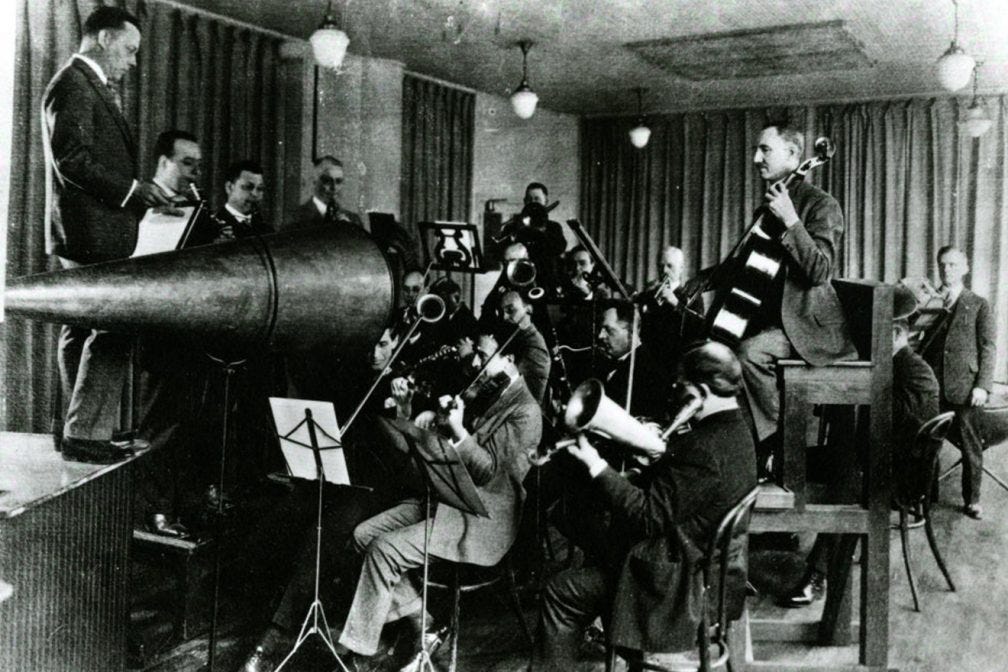


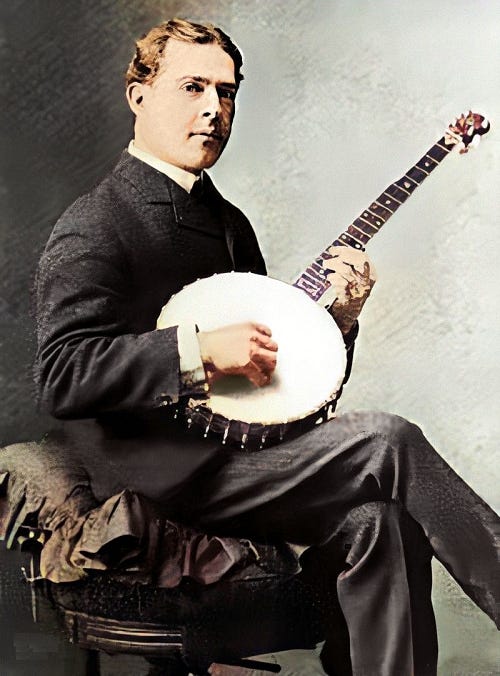

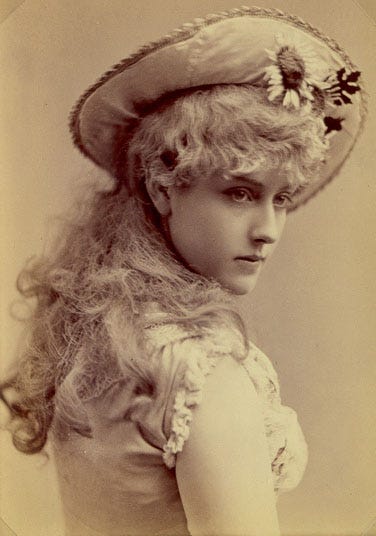


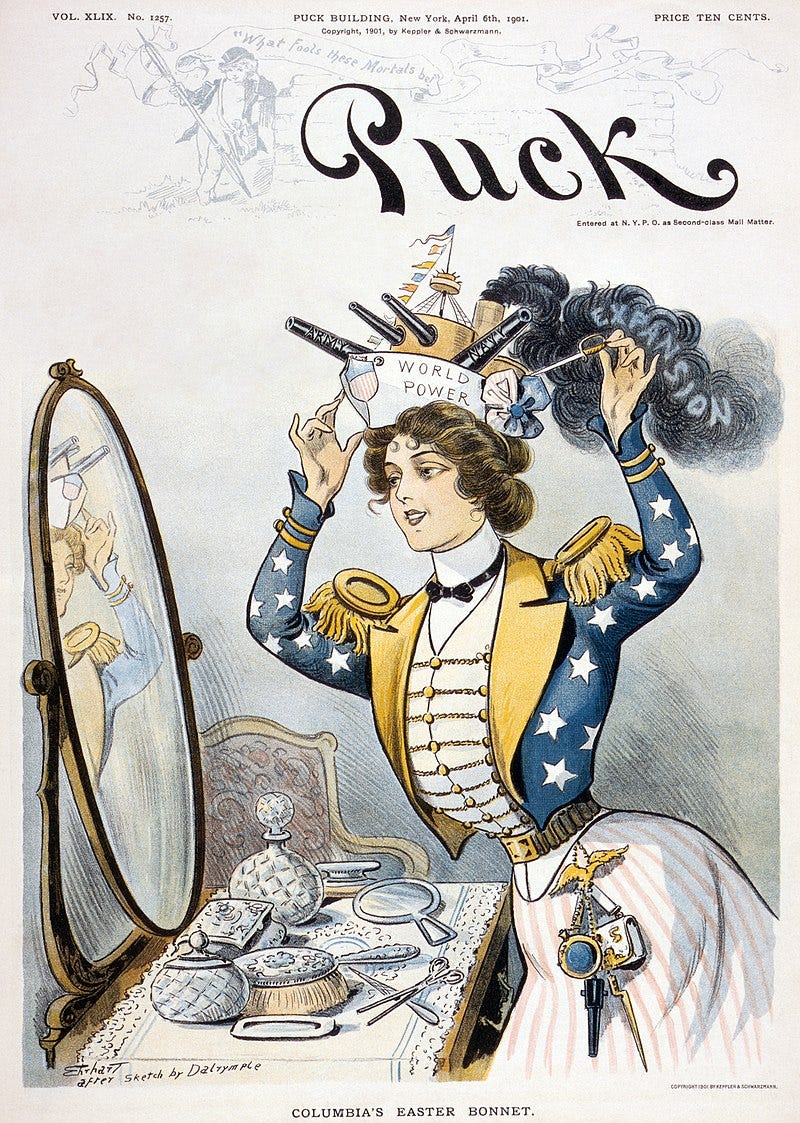
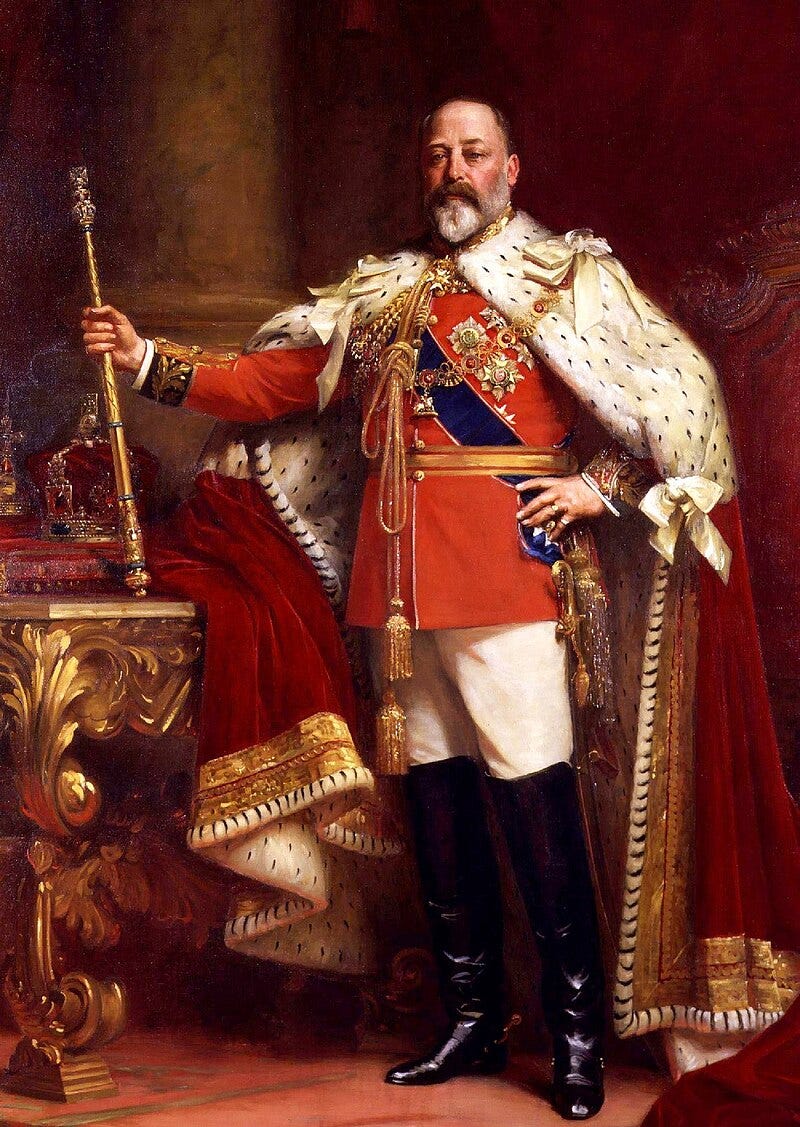




I think the focus on “artists” now rather than songs is a symptom of a music culture which has been increasing in decadence really since the 1920s. Reading this actually reminded me of a textpost I wrote on ifunny years ago about this topic. Pretty much every popular genre after the 1920s is derivative of Jazz, which was hated by conservatives and right-wingers in the interwar period and I suspect for good reason. Jazz, from what I hear, is music designed by and for instrumentalists. Like the modern artists, they got bored. Jazz is less boring to play, and also it is flashier and fast-burn, making it a hit at the clubs. I can’t say I listen to any music from before the 1920s, but I do sometimes enjoy watching old cartoons, and I see the same characteristics which modern audiences hate. The racist stuff always cracks me up, it’s genuinely funny. And also, a lot of times when it’s not something played for laughs, it hardly “dehumanizes” a foreign race. I don’t understand why people get offended because White people in the 1920s portrayed an inaccurate, romanticized view of their cultures. My chest is filled with a sense of national pride when I see the ways that the Japanese portray Americans. I even feel a sense of pride watching how the Chinese make MacArthur look so badass as a villain.
> if you ever come across a song from the 1910s in the wild, it’s almost certainly going to be a part of some 14 year old kid’s analogue horror project.
KEEEEEEK. Trvthnvke.
Very good points on 1918 as well. Whenever some libtard bitches and moans about the red summer, remember that they were fighting against the inner city ghettoes that exist today. Those ghettoes used to be the functionally segregated neighborhoods of the White ethnics in the cities, and they made sure their own didn’t break the barriers. But everything changed when the Hennessy Nation attacked…
The 1920s were not as liberal as people say. Flappers et al were a small subculture at a time when other parts of the country were more conservative than they’d ever been. The Klan was growing again, Jim Crow was at its height, immigration was cut extremely thin, and yes even though it was enforced by women and only vaguely tolerated by most men, temperance was another conservative movement. But that sort of low urban subculture had an outsized influence on the modern perception of the 20s
Heh, I was just listening to Maple Leaf Rag. It's a shame stuff like fallout and dr. strangelove has turned old music into this heccin scary psychological horror apocalypse music for zoomers. "This music ain't rap + dubstep? Nahhh blud no cap dats gon' play when all da nuclear bombs go off fr fr but don't yall DARE enjoy wyteboi entertainment like skibidi toilet"